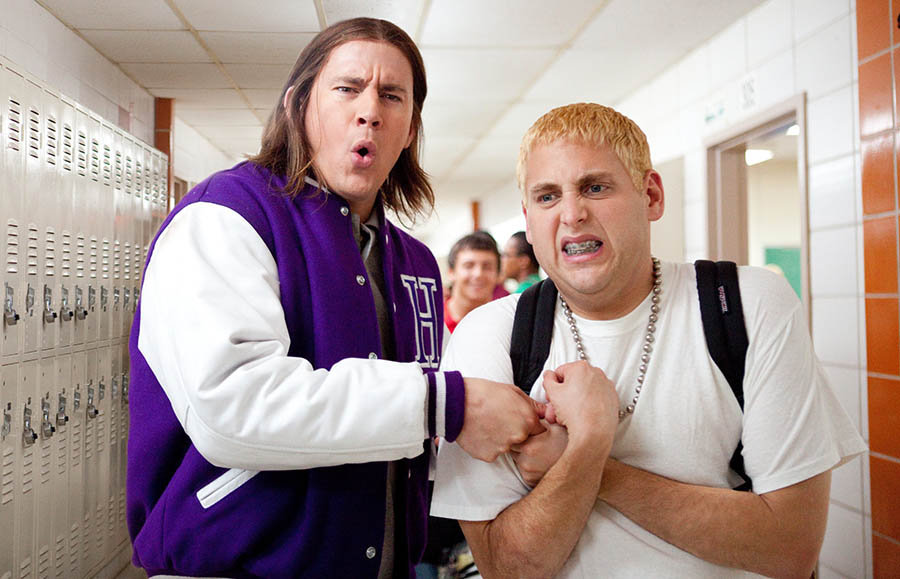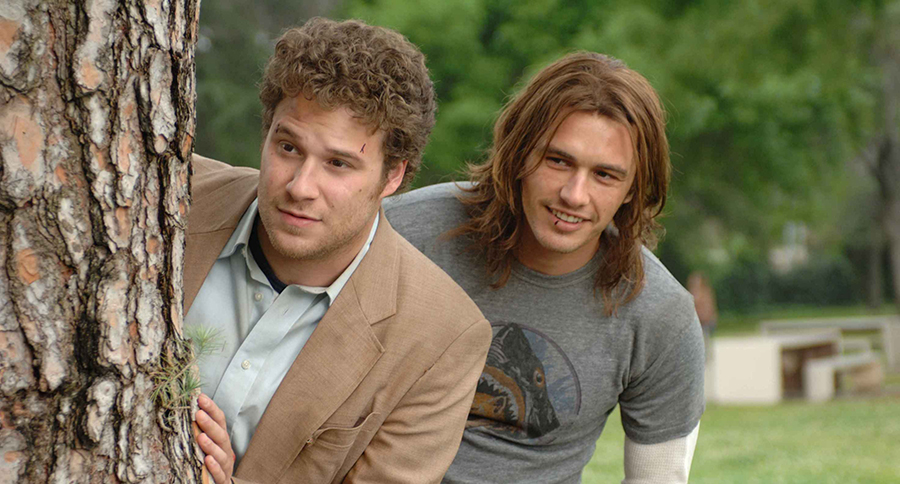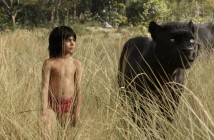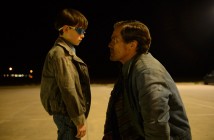Going to the movies or turning on the television can be an escape. But how far away from reality are viewers generally willing to go?
It has been my experience, based solely on the phenomenon of observing and noting patterns, that the further a topic is from our own personal experiences, the less we are likely to notice the ways in which — to those who are experts on said topic — the on-screen portrayals are filled with falsity.
So, for this list, I compiled some topics that I personally have seen done over and over again where members of certain sub-cultures tend to rise and collectively say, “that’s not how it is.”
7. School
The problem with dramatic renderings of school environments, whether it be high school or college, is that the people making the art are often far enough removed from their own experiences with the subject that either the nature of school has changed or the artist has evolved to an extent where capturing the totality of the experience becomes nigh impossible.
One of the better commentaries on this subject comes from 21 Jump Street with Jonah Hill and Channing Tatum when the two main characters opine on how the things that were cool (or not) when they were in school have completely flip-flopped. A real world example of this is the difference in how kids (especially girls) think about comic books, or movies based upon them, now versus how they did in the 1990s and early 2000s… y’know before they were cool.
This consistent fluidity means that movies and shows that are put in a school setting often come off at best as being a few years behind the curve.
At least half of the point in being in either high school or college, at least in terms of pop culture, is to tear down what came before you and build something of your own. Anything older than four years is ancient. As such, the irony ends up being that these shows and films resonate more with the post-school audience (24-30 year olds) than the people portrayed in works themselves who might respond to a viewing as though they’ve just been asked to be someone’s Myspace friend.
Also, there aren’t a lot of flicks that focus on the intellectual challenges of growing in school, opting instead to focus on the social challenges like making friends, having sex, partying, or falling in love. None of these are in and of themselves poor conceptual beginnings for a coming of age story and that is why films like American Pie work. But in order to encapsulate that feel, filmmakers and television producers err on the side of fantastical symbolism rather than a kind of gritty reality that could make for a unique and interesting product.
A realization that not everyone in school fits nicely into a clique or a stereotype could go a long way. Similarly, realizing that kids can be smart and capable rather than always self-centered and shortsighted might make for a more nuanced pop culture existence that better reflects the complicated reality of trying to traverse the unique environments that are created by learning institutions.
6. Animals
If you aren’t super into animals, you may never have noticed this, but it is entirely common for movies to switch between cats and dogs, and especially horses, from scene to scene assuming the audience won’t notice the subtle differences.
I certainly had been missing this issue my whole life until I started spending a lot of time around someone who knows their shit when it comes to the animal kingdom. Apparently, the lack of consistency for animal actors is rampant. It makes a certain kind of sense, and is probably better for the animals themselves, but now that it has been pointed out to me I have seen some glaring issues, usually where a character on a horse is talking and then there is a cutaway and then we come back to that character in the middle of the speech but on a horse half as big as the one he was riding a second ago.
I seriously had no idea how common this was. Check it out sometime, it’ll blow your mind.
5. History
William Wallace was a nobleman, Coach Boone (Remember the Titans) was an ass, Steve McQueen didn’t single-handedly defeat the Nazis, Art Howe did not fight Billy Beane every step of the way, there are disputes over how Lyndon Baines Johnson is portrayed in Selma, which I have not yet seen.
There are countless more examples of this and creative licencing is always at issue here. We aren’t trolling on 300 or Inglorious Basterds, films meant purposefully to over-stylize history, but far too often fiction gains a hefty amount of its emotional punch by claiming “based on true events” and then instilling in generations widely held beliefs of not only historical inaccuracies, but often of getting events and people completely backwards.
I’m sure historians watch fictional portrayals of the past in a kind of persistent dismay.
4. Marijuana
Knock it off with the silliness. Not every movie that includes people smoking weed needs to take it the the extreme equivalent of The Hangover movies. There are plenty of fictional depictions of alcohol that are over-dramatized, fantastical extrapolations of the wildest possible use of the substance… but there are also plenty of depictions of alcohol that don’t operate under such false pretense. Sometimes a guy having a beer is just a guy having a beer.
Believe it or not (if you are unaccustomed or inexperienced), there are people who smoke marijuana in much the same manner as those people who choose to have a glass of wine or two with dinner; which is to say that the thing itself serves as an accessory to events and not the reason for them.
Not everyone who smokes weed is a stoner. Not every stoner is unproductive or incapable of elevated thinking processes, and the fiction most widely consumed in this country does little to combat those stereotypes.
Part of this has to do with the nature of storytelling which requires conflict and resolution. To quote Jon Stewart, “no one cares about a story of a truck not on fire,” and likewise no one would watch a movie where the protagonist smoked a bowl and then just spent the whole night studying or working… unless what they were studying or working on was interesting.
I could only think of one example from the vast catalogue of fiction in my brainspace that meets these criteria and it is a strange one – The Cell. You may remember The Cell as an edgy thriller/horror movie starring Jennifer Lopez as an FBI (?) agent tasked with entering the mind of a serial killer. What you may not remember is a scene where, when doing some research from home, the Lopez character lights up a joint.
There is no accompanying reggae music. Seth Rogen (nothing but love for you, man) doesn’t come trotting out to explain what a cross-joint is or start getting hilariously paranoid. J-Lo just sits and smokes a little to relax while she works and no big deal is made of it to the extent that I missed it entirely the first several times I saw the movie.
Marijuana consumption is coming out of the underground. It is legal for medical purposes in most states and legal for recreational purposes in two states. It should no longer be looked at solely as a means for making one dumber.
Weed doesn’t have to be an argument, it doesn’t have to be an escape, it doesn’t have to be the centerpiece of the drama or even the comedy. Sometimes a guy smokin’ a little weed is just a guy smokin’ a little weed.
3. Video Games
ALL VIDEO GAMES ARE BUTTON MASHERS!
It may sound silly to draw a line in the sand over something so trivial, but video games aren’t exactly easy. Most of them require some kind of hand-eye (thumb) coordination and usually fast responding cognitive ability.
As much as it can be amusing for those who don’t partake to view video games as a mindless distraction, their presence in pop culture (excluding of course their own medium) often showcase just how difficult it is for actors to recite dialogue while coming anywhere close to looking like they are actually playing a game.
If you have ever been watching a movie or TV show where someone is driving and thought something along the lines of, “uh… usually when you turn the wheel like that the whole car moves,” you can understand what it is like for a gamer to watch actors pretending to play video games; it looks distractingly unrealistic.
Hammering away nonsensically at random buttons seems to be the go-to methodology which would result in absolutely nothing coherent happening on screen if one was actually playing a game.
Beyond that particular issue, video games are regularly treated as inferior products and used to show laziness and a lack of mental acuity even in a movie like Grandma’s Boy which is about people who develop video games. The film Role Models managed to successfully, and with respect, portray LARP better than most flicks portray video games and their culture.
And if a video game itself happens to be made into a movie or show (has a game ever been made into a TV show?) you might as well gouge your eyes out to save your brain from the absurdity that will ensue.
2. Sports
The WWE looks more like real fighting than most football movies look like real football. Hits are almost always more vicious than is either possible or legal anymore and the trick play that is often run to win the game at the very end is probably against the rules.
Baseball and basketball fiction suffer from similar, but unique sets of problems that arise from trying to tell a story set in the sports universe that relies on the audience not having an advanced understanding of how these things work in real life.
Have you ever wondered why Kevin Costner is in so many baseball movies? It’s because he can throw a baseball with proper form. Everybody else (excluding the excellent and underappreciated Sugar) pretty much bastardizes the entire concept. Even Charlie Sheen, whose Ricky Vaughn at least looks somewhat reasonable, is still employing mechanics that the average baseball die-hard would immediately recognize as insufficient to throw anywhere near the 100 MPH his character is supposed to reach.
This is why Moneyball expertly avoids this issue at every turn by showing actual archived footage of real baseball games. That way, we don’t have the cognitive dissonance and uncanny valley aspect of watching something that is close to familiar, but undoubtedly wrong.
But all too often, the mechanics look akward or an announcer says something that makes no sense or a coach or GM employs a tactic that could never happen in real life. And sometimes the movie is Trouble With the Curve and it does all these things.
Because sports fans tend to consume their hobby like a drug, how the games look and feel is deeply embedded into their (our) subconsciousness. It doesn’t take much to upset that balance in a fictional setting because anything different from something we see on a daily basis is immediately recognizable as such.
Inaccurate portrayals of professional and collegiate sports are almost as common as inaccurate portrayals of the final topic on our list…
1. Science
If Neil deGrasse Tyson could just be the czar of science-based films and TV, we likely wouldn’t have this problem. Though, I’m sure he has better things to do, and it might make the movies less fun.
Still, if there is one community that most often feels an immense struggle to suspend their disbelief when watching popular fiction, it is probably scientists. Most of us aren’t as smart as them and so miss the scientific impossibilities that show up in our favorite sci-fi and other movies.
Summed up in a satirical manner by Rob Lowe’s character in Thank You For Smoking when an obstacle is presented to the notion of smoking in space, “Thank God we invented the … whatever device.”
That approach works well enough for most of us, but not the likes of Dr. Tyson who recently famously critiqued critically acclaimed films Gravity and Interstellar.
You see, science is all about the specifics of how things work. As has become apparent (I hope) television and film are often forced to cut some corners in order to maintain forward-moving plot-driven conflicts. After all, artistic liberty is often required for fiction not to wind up drowning in minutiae.
All of these points notwithstanding, my biggest pet peeve when engaging with the material in question is when someone I’m with can’t stop being cynical about the smallest of irrelevant details. If you need everything in your movie to be exactly life-like, watch a documentary.
Suspending disbelief is also a responsibility of the viewer. Nobody would really want to watch a movie where the author stops and explains every step in every process. Sometimes it’s better not to focus on the warts on the trees in a beautiful forest.
Sometimes it’s better just to fill in the blanks in a charitable way, but keep these seven topics (and I’m sure plenty more) in mind when thinking about the sub-cultures of others and how they are most likely being simplified in the art we consume.
What you see on screens big and small is usually a few steps removed from reality. And that is okay but important to remember.





